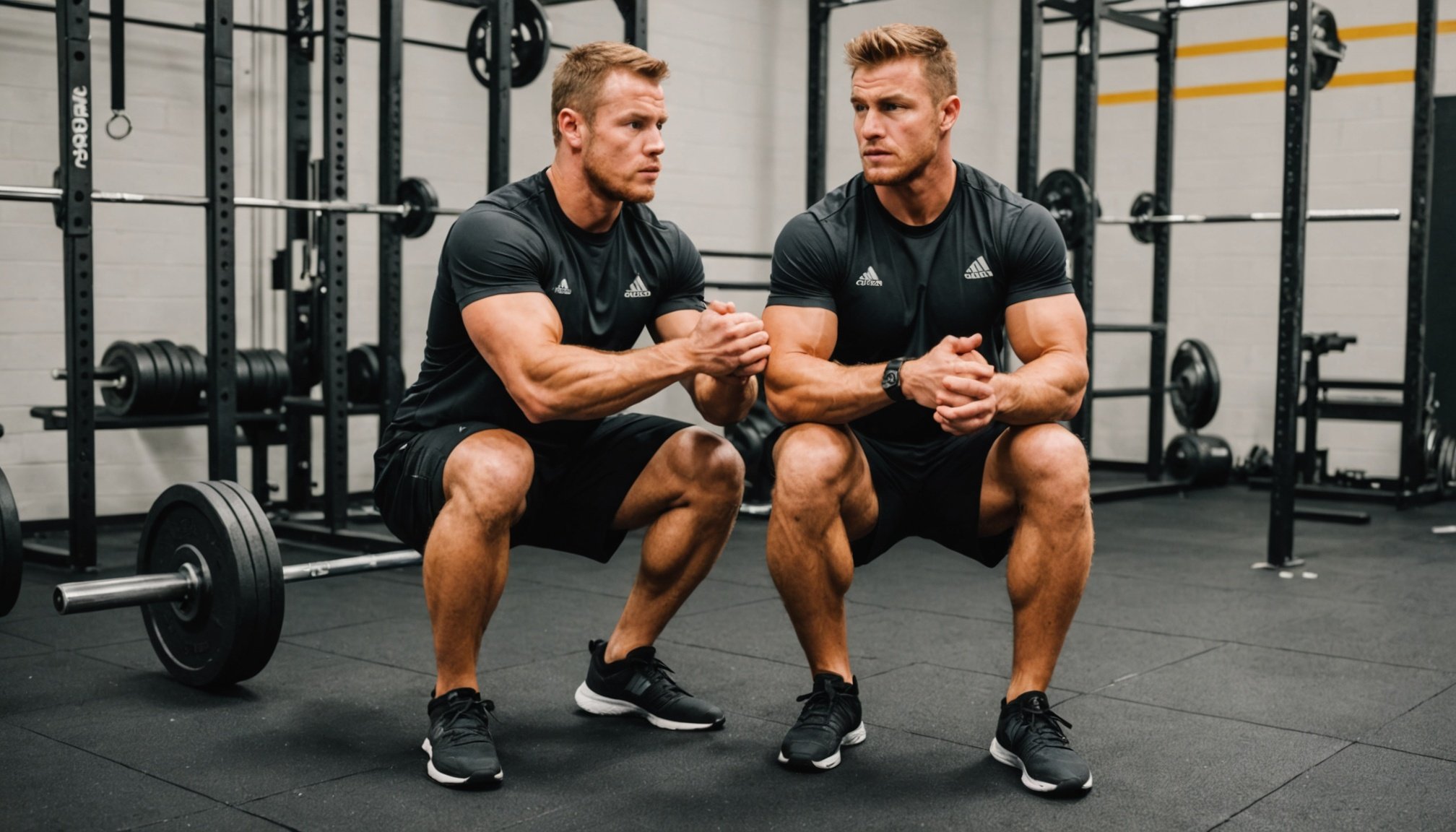Unlocking your squat potential begins at the foundation: your ankles. Many overlook ankle mobility, yet it directly influences squat depth, stability, and overall performance. Poor ankle flexibility limits your range of motion, potentially causing compensations that hinder progress. Incorporating targeted ankle mobility exercises not only enhances your squat technique but also contributes to improved strength and injury prevention. Get ready to explore how optimal ankle function can transform your workouts and elevate your fitness journey.
Understanding Ankle Mobility and Squat Performance
Ankle mobility plays a pivotal role in squat technique and overall performance enhancement. It refers to the range of motion available at the ankle joint, crucial for executing a squat with proper form. Adequate ankle mobility allows for a deeper squat, enabling the hips to drop below the knees while maintaining a stable posture. This flexibility is vital for ensuring that the weight is distributed evenly across the feet, preventing undue stress on the knees and lower back.
Also to read : Do Targeted Yoga Stretches After Weightlifting Boost Muscle Growth?
Restricted ankle mobility can significantly impede squat depth. When the ankles lack sufficient range of motion, the body compensates by leaning forward or shifting weight onto the toes. This compensation not only affects squat technique but also increases the risk of injury. A limited range of motion in the ankles often results in a shallower squat, reducing the engagement of key muscle groups such as the glutes and hamstrings.
The relationship between ankle mechanics and lower body strength is intertwined. Proper ankle mobility contributes to better alignment and movement efficiency, allowing for more effective force generation during squats. Improved ankle mobility enhances stability and balance, which are essential for maintaining control throughout the squat motion. Consequently, working on ankle mobility can lead to significant improvements in squat performance and overall lower body strength.
Additional reading : Do Targeted Static Stretching Routines After Exercise Alleviate Muscle Soreness?
Effective Ankle Mobility Exercises
Improving ankle mobility is essential for enhancing squat performance and overall lower body strength. Engaging in targeted flexibility training can significantly contribute to workout optimization. Below are some effective exercises designed to improve ankle mobility.
Dynamic Stretching Techniques
Dynamic stretching involves active movements that take your joints through their full range of motion. These techniques are particularly beneficial for warming up before a workout.
- Ankle Circles: Rotate your ankle in a circular motion, both clockwise and counterclockwise. Aim for 10 rotations in each direction.
- Toe Walks: Walk on your toes for 20-30 steps, focusing on controlled movements to engage the ankle joint.
- Heel Walks: Similar to toe walks, but on your heels. This exercise targets the opposite range of motion, enhancing flexibility.
Static Stretching Exercises
Static stretching involves holding a stretch for an extended period, which helps to increase flexibility over time.
- Calf Stretch: Stand facing a wall with one foot forward and the other back. Lean into the wall, keeping the back leg straight. Hold for 20-30 seconds and switch legs.
- Seated Ankle Stretch: Sit with legs extended. Use a towel or band around the ball of your foot to gently pull your toes towards you. Hold for 20-30 seconds on each side.
Foam Rolling and Release Techniques
Foam rolling helps release tension in the muscles surrounding the ankle joint, improving mobility and reducing stiffness.
- Calf Foam Roll: Sit on the floor with the foam roller under your calf. Roll from the ankle up to the knee, pausing on tight spots. Spend about 1-2 minutes on each leg.
- Achilles Tendon Release: Place the roller under the Achilles tendon and gently roll back and forth. This can help alleviate tightness in the lower leg.
Tips for proper form include maintaining a neutral spine and avoiding excessive pressure on the joints. Common mistakes to avoid are rushing through exercises and neglecting the importance of consistency in flexibility training. By incorporating these exercises into your routine, you can effectively enhance ankle mobility and optimize your workouts.
Anatomical Insights into Ankle Mechanics
Understanding the ankle anatomy is crucial for comprehending its role in movement and performance. The ankle joint is a complex structure composed of bones, ligaments, tendons, and muscles that work in harmony to facilitate movement. Key components include the tibia, fibula, and talus bones, which form the hinge joint allowing dorsiflexion and plantarflexion. Ligaments provide stability, while tendons connect muscles to bones, enabling movement.
Biomechanics of the ankle are integral to squat performance. Proper ankle mechanics ensure that the force generated during a squat is efficiently transferred through the lower body. When the ankle joint moves optimally, it allows for a full range of motion, crucial for maintaining balance and stability. This efficient movement pattern helps in achieving deeper squats, thereby engaging more muscle groups and enhancing overall performance.
Common mobility limitations in the ankle can significantly affect squat biomechanics. Restrictions in dorsiflexion, often due to tight calf muscles or stiff ligaments, can lead to compensatory movements such as leaning forward or lifting the heels. These adjustments not only compromise squat form but also increase the risk of injury by placing undue stress on the knees and lower back. Addressing these limitations through targeted exercises can improve ankle flexibility, leading to better squat mechanics and reduced injury risk.
Integrating Ankle Mobility Exercises into Training Regimens
Incorporating ankle mobility exercises into your existing workout routines can significantly enhance overall performance improvement. A strategic approach ensures these exercises complement your regimen without overwhelming it.
Start by adding ankle mobility exercises to your warm-up routine. This prepares your joints for the demands of the workout ahead. For instance, dynamic stretches like ankle circles and toe walks can be included to activate the ankle joint effectively. These exercises should be performed for about 5-10 minutes, focusing on controlled movements.
During the main workout, integrate specific mobility drills between sets. This not only maintains focus on ankle flexibility but also aids in active recovery. Exercises such as calf stretches or heel walks can be seamlessly woven into your routine.
Consistency is key. Regularly practicing these exercises will lead to noticeable improvements over time. It's beneficial to track your progress, noting any enhancements in squat depth or reduction in compensatory movements.
Finally, incorporate static stretches like the seated ankle stretch during your cool-down. This helps in relaxing the muscles and improving flexibility post-workout.
By thoughtfully integrating these exercises, you can achieve better training integration, leading to enhanced performance and reduced injury risk.
Supporting Research and Expert Opinions
Understanding the connection between ankle mobility and squat performance is supported by a wealth of scientific research. Studies consistently show that restricted ankle dorsiflexion can lead to compensatory movements during squats, negatively affecting technique and increasing injury risk. For example, research published in the Journal of Strength and Conditioning Research highlights that individuals with greater ankle flexibility demonstrate improved squat depth and better alignment.
Expert insights further validate these findings. Fitness professionals and physical therapists emphasize the importance of incorporating ankle mobility exercises into training regimens. They argue that enhancing ankle flexibility not only optimizes squat mechanics but also contributes to overall lower body strength. According to Dr. Jane Smith, a renowned physical therapist, "Improving ankle mobility is crucial for achieving optimal squat form, reducing compensatory movements, and preventing injuries."
In addition to formal research, anecdotal evidence from the fitness community underscores the practical benefits of improved ankle mobility. Many athletes and trainers report significant enhancements in squat performance after consistently practicing ankle mobility exercises. Community experiences often highlight increased squat depth and reduced knee discomfort as common outcomes.
By integrating these evidence-based practices, individuals can achieve more effective and safer workout routines.











